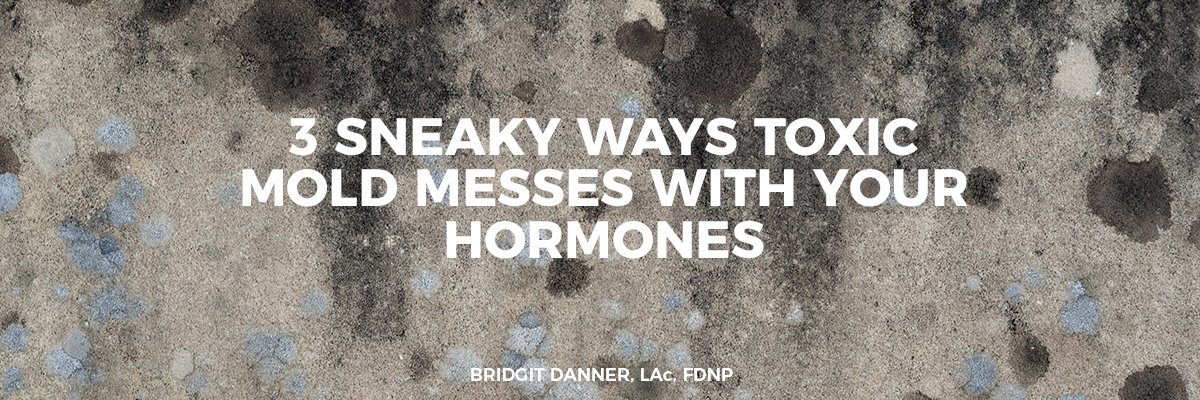How Toxic Mold Hurts Your Liver (and How to Undo the Damage)
Mold toxicity affects all bodily systems. But it really does a number on your liver. This article lays out what toxic mold does to your liver and offers tips to optimize your liver function. Let’s jump in!
How Mold Toxicity Affects Your Liver
Your liver needs to work well to detox mold. Unfortunately, mycotoxins overwhelm your liver and make that difficult. Here’s how...
Inflammation
For starters, mycotoxins increase inflammatory cytokines in the body. (1) This leads to chronic inflammation, which is associated with liver disorders, including fibrosis and necrosis. Research also suggests a link between mycotoxin exposure and elevated liver enzymes. (2) Your GGT (Gamma-Glutamyl Transpeptidase) liver enzyme may be high in mold illness.
The chronic inflammation that comes with mold illness also overloads the liver, increasing your risk of insulin resistance. Plus, when your liver is burdened with mycotoxins, this damages your mitochondria, causing negative effects on your appetite and energy production.
One huge way mycotoxins overwhelm your liver involves your genes. In a perfect world, your liver would filter mycotoxins, and they’d be escorted out in your urine or stool. However, if you’re one of the unlucky 25% with the HLA-DR gene, then your body doesn’t produce antibodies against mycotoxins.
Instead, for those that struggle with detox, mycotoxins go through something called ‘enterohepatic recirculation.’ That means that rather than being safely ushered out of the body, they keep recirculating, causing mayhem in the process.
What’s most startling is that mycotoxins increase your risk of liver cancer. (3) How? Well, believe it or not, some mycotoxins cause mutations in a tumor suppressor gene.
Combine that inability to snuff out tumors with chronic inflammation and elevated liver enzymes, and you’ve got yourself the perfect storm for liver cancer. Even low levels of mycotoxin exposure can increase your risk of liver cancer.
Leaky Gut & Gut Infections
Toxic mold can be a strong disruptor of the gut in these way:
Increases leaky gut
Lowers immunity to infections like parasites
Likely candida overgrowth
Dysbiosis (less friendly bacteria, more pathogenic bacteria
Thinned mucosal (protective) lining
Intestinal permeability AKA leaky gut (inflammation, liver burden, immune disruption)
Decreased intestinal detoxification
Decreased antioxidant and neurotransmitter production
A leaky gut combined with increased infections means more waste product is passing into the bloodstream to be processed by the liver.
This is one way autoimmunity can develop- the body starts to attack all these wastes in the blood and, accidentally, the body’s tissue. This can include Hashimoto’s Thyroiditis.
The liver is a busy site of thyroid hormone production as well. When the liver is burdened, guess what? You are likely not converting inactive thyroid hormone into the active form you need.
Toxin Burden
Your liver already has enough to deal with in modern life from contaminants in water, air and food. When you add the burden of living or working in a moldy environment, it will eventually become too much to bear.
Detox Your Way to Better Health
While these truths can be scary, don’t worry. There are plenty of natural ways to get your liver detoxing well - so you can get that mold outta ya!
Here are some of my favorites:
Coffee contains certain compounds, kahweol palmitate and cafestol palmitate, both of which can increase glutathione production. Glutathione is essential for optimal detoxification and mitigating free radical damage.
Coffee also contains a compound called theophylline, which can help to reduce inflammation in both the intestines and liver.
Broccoli sprouts are high in sulforaphane and sulforaphane activates the NrF2 pathway, supporting phase 1 liver detox. The Nrf2 pathway, known as the “master redox switch,” activates your DNA to produce more antioxidants, including glutathione. In fact, research shows sulforaphane has more potent effects on Nrf2 than milk thistle, curcumin, and resveratrol!
The sulforaphane in broccoli sprouts supports phase 2 liver detox as well, especially the glucuronidation pathway. This pathway is particularly important for mold illness, as glucuronidation helps remove mycotoxins.
Supports mitochondrial permeability
Protects DNA, especially mitochondrial DNA
Protects lipids and proteins (it’s a lipid-soluble antioxidant)
Recycles vitamin E and C
Anti-inflammatory
Supports liver health
Supports glucose and fat metabolism
Enhances glutathione activity
Hungry for More Detox Tips?
Check out this recent post that spells out 30 mold detox techniques!
When it comes to detox, don’t forget the power is on your plate! You can choose foods that supercharge your detox abilities to give your body (and liver) the upper hand.
<<Grab my free eGuide Recipes for Liver Detox here! >> It’s full of 23 tasty, liver-loving recipes to upgrade your detox game.
Bridgit Danner, LAc, FDNP, is an acupuncturist turned functional health coaching and has worked with thousands of clients since 2004.
She is the founder of FunctionalDetoxProducts.com and the author of The Ultimate Guide to Toxic Mold Recovery: Take Back Your Home Health & Life, available in audiobook, Kindle and paperback on Amazon.












I was introduced to CoQ10 as an supplement about 4 years ago. At the time, I was in the middle of detoxing from mold, and I had already spent a lot of money on trying to heal. I was skeptical to try yet another thing, but the truth was that I was only about 50% better, which is not enough at all. So I tried it…